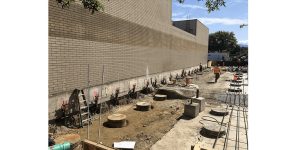Plywood Sheathing Market Analysis: Price Trends, Industrial Uses, and Key Players Across Global Regions
5 min readThe plywood sheathing market has witnessed substantial fluctuations and dynamic trends across various regions globally. This comprehensive analysis delves into the intricate details of price movements, trend analysis, and forecasts, providing invaluable insights for stakeholders in the construction and manufacturing industries. As plywood sheathing remains a critical component in these sectors, understanding its market dynamics is essential for informed procurement and strategic planning.
Request For Free Sample: https://www.procurementresource.com/resource-center/plywood-sheathing-price-trends/pricerequest
Definition: What is Plywood Sheathing?
Plywood sheathing refers to a type of engineered wood product made from thin layers of wood veneer, known as plies, which are glued together with adjacent layers having their wood grain rotated up to 90 degrees to each other. This cross-graining technique imparts high stability and strength to the plywood sheathing, making it an indispensable material in the construction industry. It is primarily used for exterior walls, roofs, and floors in residential and commercial buildings due to its durability, resistance to warping, and ease of installation.
Key Details About the Plywood Sheathing Price Trend
The plywood sheathing market has been characterized by a series of price fluctuations driven by a multitude of factors. Here are some key insights into the price trends observed across different regions:
- Asia-Pacific:
- The Asia-Pacific region, led by China and India, is one of the largest producers and consumers of plywood sheathing. The region has seen significant price volatility due to fluctuating raw material costs and varying demand-supply dynamics. Rapid urbanization and government infrastructure projects have spurred demand, causing periodic price surges. However, the availability of cheaper alternatives and economic slowdowns have occasionally tempered these increases.
- Europe:
- In Europe, the price trend for plywood sheathing have been relatively stable with a moderate upward trajectory. The region’s stringent environmental regulations and emphasis on sustainable building practices have driven demand for high-quality, certified plywood products, pushing prices upward. Moreover, supply chain disruptions due to geopolitical tensions and trade policies have occasionally impacted prices.
- North America:
- The North American market has experienced significant price increases, especially during periods of economic recovery and construction booms. The U.S. and Canada, being major consumers, have faced challenges such as tariffs on imported plywood, increasing raw material costs, and supply chain disruptions due to natural disasters. These factors have collectively contributed to price hikes.
- Latin America:
- Latin America’s plywood sheathing market has been influenced by regional economic conditions, with Brazil and Mexico being key players. Currency fluctuations and economic instability have led to price variability. However, increased investments in construction and infrastructure have generally supported price growth.
- Middle East & Africa:
- The Middle East and Africa have shown a steady demand for plywood sheathing, driven by extensive construction activities, particularly in the UAE, Saudi Arabia, and South Africa. Prices have been influenced by import dependencies and regional economic policies. The push towards modernization and urban development projects has sustained demand and supported stable price trends.
Industrial Uses Impacting the Plywood Sheathing Price Trend
Plywood sheathing is integral to various industrial applications, and its demand is closely tied to the health of the construction and manufacturing sectors. Key factors influencing the price trend include:
- Construction Industry:
- The construction sector is the primary consumer of plywood sheathing, using it for structural applications in residential, commercial, and industrial buildings. Fluctuations in construction activity directly impact plywood demand and prices. Economic growth, housing market trends, and government infrastructure projects play pivotal roles in driving construction activity and, consequently, plywood prices.
- Manufacturing Sector:
- Plywood sheathing is also used in the manufacturing of furniture, cabinetry, and packaging materials. Trends in the manufacturing sector, driven by consumer demand and industrial growth, affect plywood consumption. Innovations and advancements in manufacturing processes can either increase demand for high-quality plywood or shift it towards alternative materials, thereby impacting prices.
- Environmental Regulations:
- Stricter environmental regulations and sustainability concerns are pushing the industry towards certified and eco-friendly plywood products. Compliance with these regulations can increase production costs, thereby raising plywood prices. However, it also opens up opportunities for premium pricing for certified products.
- Raw Material Availability:
- The availability and cost of raw materials, primarily timber, significantly influence plywood prices. Factors such as logging regulations, forest conservation efforts, and climate change impact timber supply, leading to price fluctuations.
Key Players in the Plywood Sheathing Market
Several key players dominate the global plywood sheathing market, contributing to price trends and market dynamics through their production capacities, innovation, and strategic initiatives. Some of the leading companies include:
- Weyerhaeuser Company:
- A major player in North America, Weyerhaeuser produces a wide range of wood products, including plywood sheathing. Their extensive forest holdings and focus on sustainable practices influence market supply and pricing.
- Georgia-Pacific LLC:
- Another North American giant, Georgia-Pacific, is renowned for its diverse wood product portfolio. Their significant market presence and distribution networks make them a critical player in shaping plywood price trends.
- Boise Cascade Company:
- Known for its comprehensive building materials offerings, Boise Cascade’s production capabilities and market strategies impact plywood sheathing prices in North America and beyond.
- UPM-Kymmene Corporation:
- A key European player, UPM-Kymmene is heavily involved in sustainable forestry and wood product manufacturing. Their commitment to sustainability and innovation influences market trends and pricing.
- West Fraser Timber Co. Ltd.:
- With operations in North America, West Fraser is one of the largest producers of wood products globally. Their extensive production capacities and market reach significantly affect plywood sheathing prices.
- Samko Timber Limited:
- Operating primarily in Asia, Samko Timber is a leading producer of plywood and veneer products. Their market strategies and production efficiencies contribute to regional price dynamics.
Conclusion
Understanding the complexities of the plywood sheathing market is crucial for stakeholders looking to make informed procurement decisions and strategic investments. Price trends are influenced by a myriad of factors, including regional economic conditions, construction and manufacturing sector health, environmental regulations, and raw material availability. Key players in the market leverage their production capabilities and strategic initiatives to navigate these dynamics and shape market trends.
Contact Us:
Company Name: Procurement Resource
Contact Person: Christeen Johnson
Email: sales@procurementresource.com
Toll-Free Number: USA & Canada – Phone no: +1 307 363 1045 | UK – Phone no: +44 7537 132103 | Asia-Pacific (APAC) – Phone no: +91 1203185500
Address: 30 North Gould Street, Sheridan, WY 82801, USA



